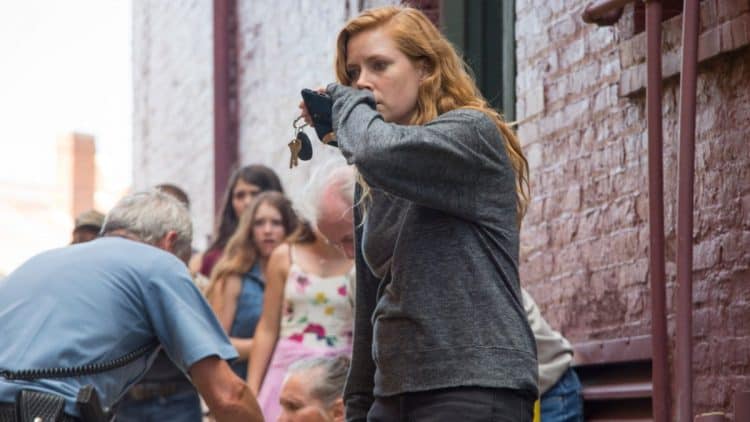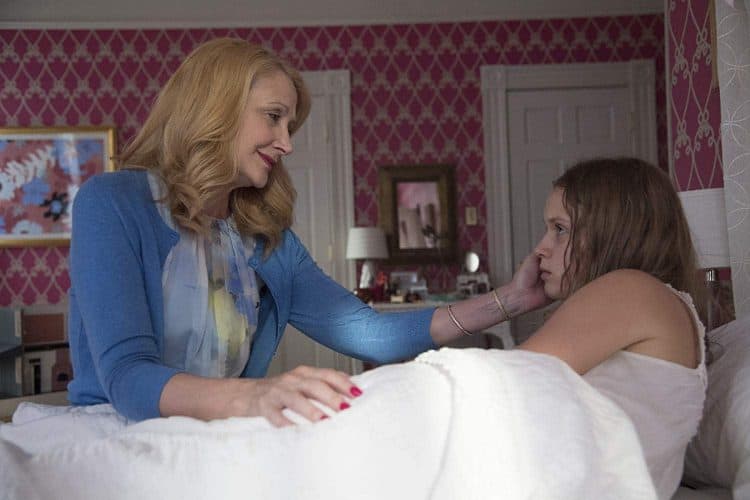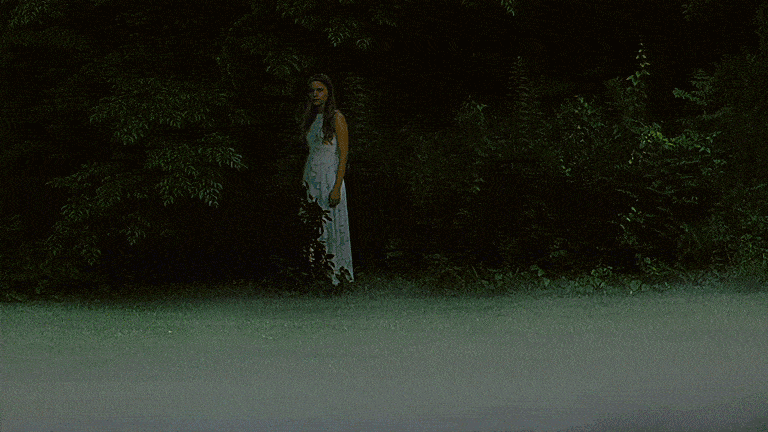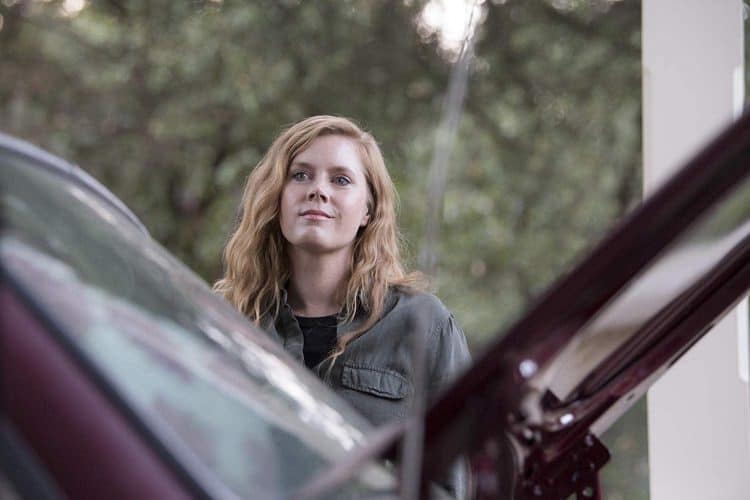Over its eight-hour runtime, Sharp Objects has emerged as an incredibly literary adaptation of its Gillian Flynn-penned source material. You can feel the weight of thought behind each addition to the show’s eclectic soundtrack, every impressionistic edit, and the many visual Easter eggs inspired by Camille Preaker’s (Amy Adams) obsession with words (for an exhaustive list of the latter, click here). It’s as if the entire architecture of the show is informed by Camille’s troubled psyche: every element colludes to create an immersive emotional environment rarely seen in television – even in this, its golden age.
There were hints about its depth at the very beginning of Jean-Marc Vallée‘s show, but “Milk”, its explosive finale, retroactively transforms every preceding episode into something much more compelling than initially thought: part-character study, part-Southern anthropology lesson, and part-time travel experiment. It’s the kind of show that will demand re-watches, not least because it ends on a note that will strike many viewers as ambiguous.
As you’ll see, however, the final episode of Sharp Objects does provide answers to most of the questions audiences might be left with after its seismic reveal was cut painfully short. In the interests of clarity, here is everything you need to know about the mystery, and the fate of the people it involves:
The killer

We know from the medical records uncovered in the seventh episode and the evidence Richard (Chris Messina) discusses in “Milk” that Adora (Patricia Clarkson) definitely killed her daughter. At the time Richard visits Camille at hospital, she is also about to be charged for the murders of the other girls, but something doesn’t quite sit right with the police’s theory. Adora’s Munchausen by Proxy syndrome made her poison her daughter over several years, but in contrast, the girls’ murders were sudden and much more brutal; not at all in keeping with the slow, systematic drip of death that eventually took Marian (Lulu Wilson).
Sharp Objects’ closing moments reveal the truth: Amma (Eliza Scanlen) is responsible for the murders of Ann Nash (Kaegan Baron) and Natalie Keene (Jessica Treska). Camille stumbles upon the dead girls’ teeth hidden in the dollhouse replica of Adora’s mansion, where they’re acting as a gruesome stand-in for the ivory floor Adora gushed over in “Closer”. Amma interrupts Camille’s discovery, but her initial mask of shock at being found out quickly slips into a smug confession: “Don’t tell Mama.”
The dramatic reveal is abruptly clipped at this point. The editing here – a quick cut to the credits – is designed to leave viewers feeling so stunned that they’re effectively paralyzed, and therefore disinclined to immediately reach for the remote.
If that effect worked, most viewers will know that “Milk” unusually features mid- and post-credits scenes. Careful watching of both tells us more about Amma’s role in the murders: assisted by her roller-skating friends wearing what look like white lab coats, she strangled Ann with the clothesline mentioned in “Vanish”. This is the first real bit of violence Sharp Objects has shown us so far, and it doesn’t stop there: the flashback depicts Natalie thrashing around in pain inside the carriage-house before dropping cold on the floor next to the bed where her blood was found. This was a detail that seemed to damn John Keene (Taylor John Smith) earlier on in the episode, but it’s worth remembering that, although he had effectively moved into the carriage-house following his sister’s death, it actually belonged to the parents of his girlfriend, Ashley (Madison Davenport), whose sister Jodes (April Brinson) is one of Amma’s accomplices.
The book also rebuts the police’s theory from “Dirt”: that it would take a grown adult with “some muscle” to remove the girls’ teeth. Flynn makes it clear that Amma was able to pull them out by herself: “Children’s teeth, it turns out, aren’t too hard to remove, if you put real weight on the pliers.”
What’s more, the show’s finale reveals that, despite being out of the clutches of Adora and just as far away from her accomplices, Amma has failed to become a reformed soul. Moments before Camille discovers the teeth, we learn that Amma’s new friend and neighbor Mae (Iyana Halley) has yet to return home as expected. Terrifyingly, a quick flash of action in the mid-credits scene spells out why: Mae’s hands are shown gripping a fence as a violent struggle takes place in the out-of-focus background.
One detail that is easy to overlook here is the polish on Mae’s nails. In the dinner scene at Curry’s (Miguel Sandoval) house, her nails were unvarnished, but here, they’re painted a bright pink. In the mid-credits flashback, we get very brief glimpses of Ann and Natalie’s hands, too – and lo and behold, their nails are painted the same colour. The images evoke something seemingly trivial that John Keene mentioned earlier about his tomboy sister’s dead body: “Her fingernails were painted. When they found her, someone painted her fingernails. Natalie would never do that.” (In the book, John also writes Camille a letter explaining that he always suspected Amma was the murderer.) Flynn’s novel doesn’t explain why Amma’s MO involved giving her victims an overtly feminine makeover before she killed them, but it may have something to do with the prettified appearance Amma had to adopt whenever she was around Adora.
Her motive

In the book, an imprisoned Amma tells Camille she killed Ann and Natalie because Adora “got all interested in them”. The two girls, whom Adora “tutored”, were growing closer and closer to her, and Amma, ever her mother’s daughter, couldn’t stomach not being the center of her world.
The show is less explicit than Flynn’s novel in this respect, but it does provide us with plenty of hints. By the time we get to “Milk”, we’ve already heard talk of Adora being close to the dead girls, although at that point, we were inclined to interpret that bit of information as a direct indictment of her, rather than of Amma. But the finale includes a telling scene that illustrates just how possessive Amma is over the women in her life. During the dinner at Curry’s, Mae mentions that she’d like to be a journalist when she grows up, a throw-away remark Amma immediately (and bizarrely) interprets as Mae being sychophantic towards Camille: “You just say that to impress Camille […] Kiss-ass.” For a moment, both Eileen (Barbara Eve Harris) and Camille look taken aback at Amma’s sneering tone, but then the current of the conversation moves them on.
Things don’t remain settled for long, however. Amma notices Camille looking at Mae’s hand – there seems to be writing on it – and the bitterness on her face calcifies. Vallée then immediately cuts to a shot of Amma doodling in a diary full of words, tacitly suggesting that she’s remaking herself in the image of her sister, the writer. This impression is deepened when Camille enters the room and Amma greets her, a note of distress clear in her voice: “Do you wish I was a writer like you?” Knowing what we know about why Amma killed Ann and Natalie, it’s clear from this scene that Mae’s off-the-cuff remark at dinner sealed her fate.
The woman in white

Most of Sharp Objects takes place from Camille’s perspective, so sometimes, the things we see aren’t real. One such instance is when James Capisi (Dylan Schombing) tells Camille he saw a “woman in white” take Natalie; Camille then envisions her mother lingering at the edge of the woods, dressed in an eerie, floating white gown. The final shot of “Milk”, however, breaks away from Camille’s perspective and shows us the truth: it was Amma, not Adora, who wore white under the forest’s dark canopy that day.
She dons the same outfit (plus some flowers in her hair) for the opening scene of “Milk”, during which she explains that her garb is an homage to the Greek goddess Persephone and explicitly makes a connection between her look and Wind Gap’s own legendary woman’s:
“I’m Persephone, queen of the underworld. She’s married to that big dude – Hades. He runs hell, but she’s in charge of punishment. But I feel sorry for Persephone, because even when she’s back with the living, they’re afraid of her, because of where she’s been. Kinda funny, huh? How many stories they have where princesses need to get rescued from witches. Wind Gap has one, even: little girls yanked from the woods by the Woman in White.”
Amma seems severely medicated when she’s delivering these lines, which perhaps explains why she lets herself stray so close to revealing the truth. Her sense of affinity with Persephone is in Flynn’s novel, too, but the book also likens Amma to another Greek deity: Artemis, the goddess of the hunt. That resemblance is certainly there as well — in order to entice the dead girls into her clutches, Flynn tells us that Amma capitalized on her friendship with them by dressing up as Artemis and pretending it was all a “game”.
What happens next?

Almost everyone involved with the show has ruled out a second season, but if you’re still feeling unsatisfied with Sharp Objects’ tease of an ending, Flynn’s novel provides just a little more information. Amma winds up in a juvenile prison until at least her eighteenth birthday – “and likely longer”, as Flynn puts it – while her accomplices earn themselves the comparably lighter punishment of stints in a psych hospital by complying with police investigations. The charismatic Adora is locked up for Marian’s murder and, in a brilliant flourish from Flynn, inspires an online fan club who lobby for her release. Alan (Henry Czerny), ever the devoted husband, sells the tainted house and moves to be closer to his wife, whom he visits as often as possible.
And as for Camille? Fresh trauma leads to her cutting again, although there is a silver lining to her fate: Curry and Eileen convince her to move in with them, give up drinking and let herself finally be cared for. The novel ends with Camille gripped by worries that she might have Adora’s illness, but a year on from her ordeal, it seems like she’s coming round to the truth: that, blessedly, she’s nothing like her mother.
The post Sharp Objects’ Ending and Post-Credits Scene, Explained appeared first on Film School Rejects.



0 comments:
Post a Comment